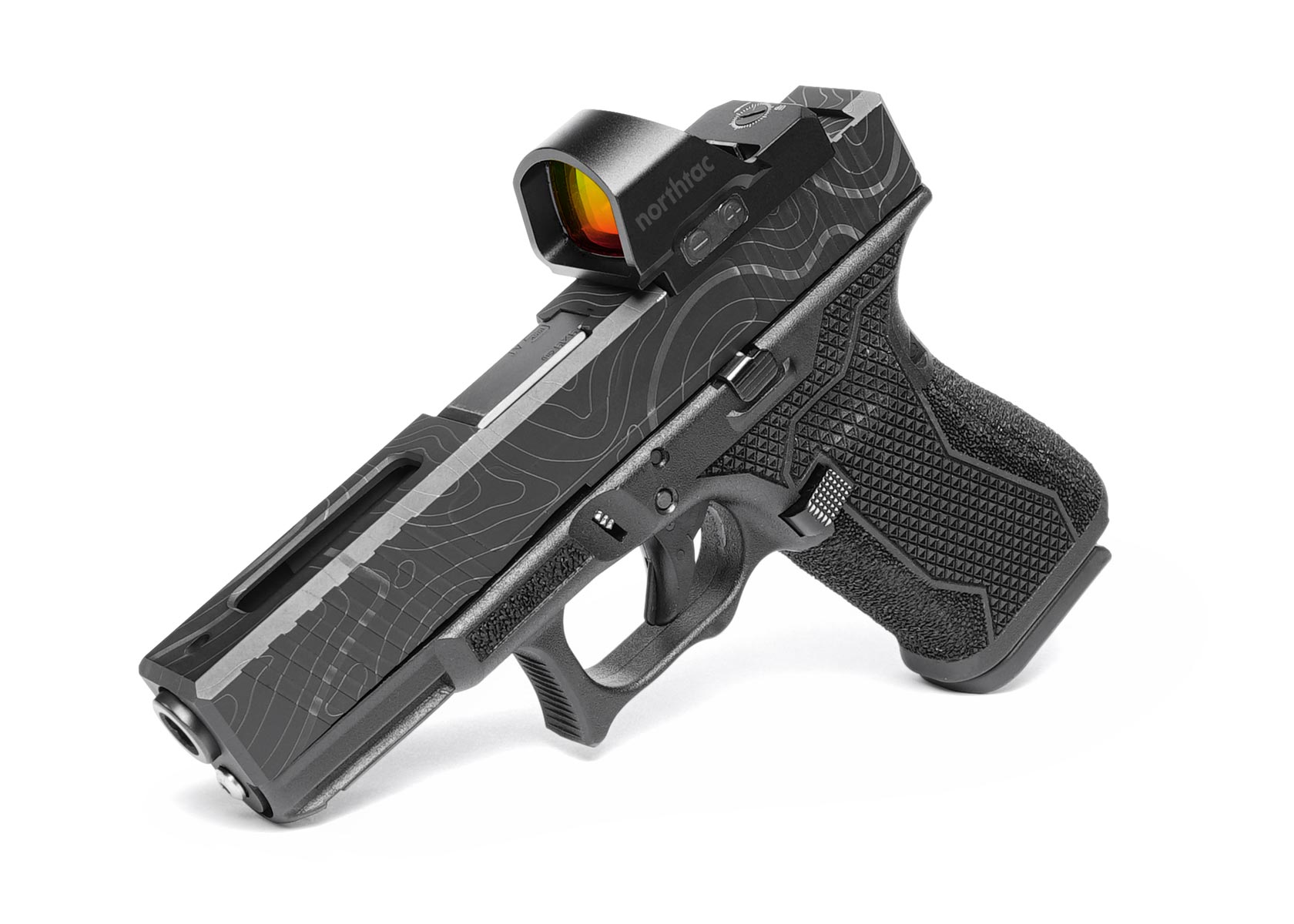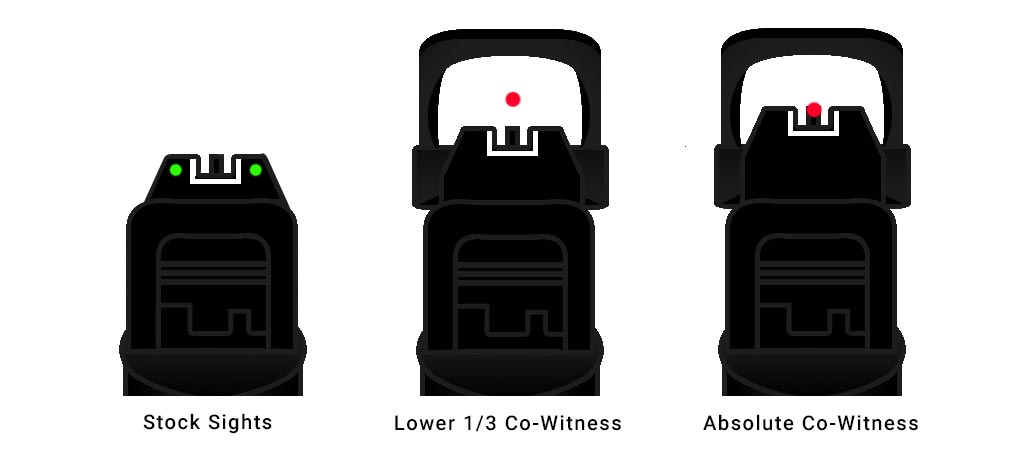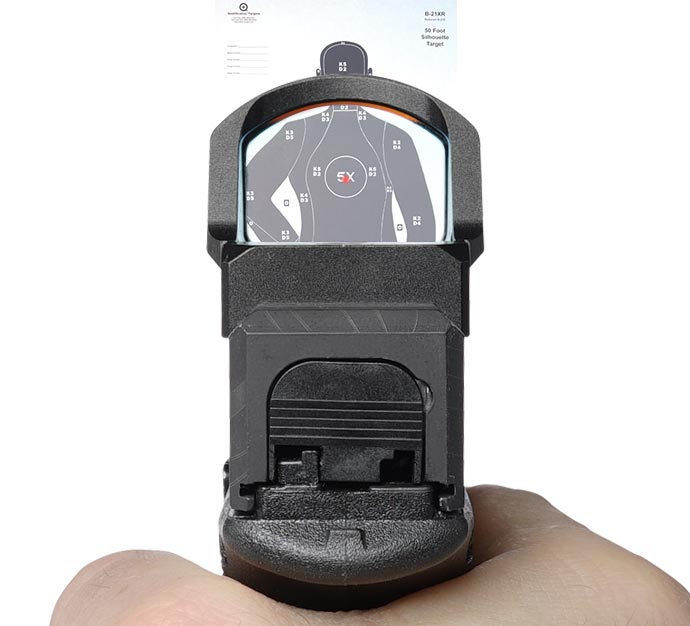Making the Transition from Iron Sights to a Red Dot on your Pistol
Posted by Trent Gander on on Dec 16th 2022

Making the Transition From Iron Sights To A Red Dot On Your Pistol
Red dots are quickly becoming the base-line sighting system for pistols. Manufacturers are also
making optics ready versions of their most popular handgun models. This means it’s a perfect
time to switch from standalone iron sights to a red dot/iron sight combo.
For many people red dots are something new, and with all new things there are questions and
concerns. Today we’ll go over the benefits, concerns, and other aspects of transitioning to a red
dot pistol sight.
Why Should You Use a Red Dot Sight on Your Pistol?
The primary reason you should use a red dot sight is ease of aiming. Unlike iron sights, a red
dot only places one focal plane between you and the target.
Iron sights work through the orientation of the front and rear sight. The orientation has to be
maintained while aiming at the target in order to make accurate hits. This means you will have
to be visually conscious of three different things while firing: the front sight, the rear sight, and
the target.
A red dot on the other hand only requires two things to be conscious of: the dot and the target.
This is a much simpler process than using iron sights. While this does not mean you will be
automatically better with a red dot (we’ll cover that later), it does mean that you have less to
process while aiming.
Once the optic is properly zeroed, all you have to do is overlay the dot on the target and the
rounds will hit in that area. Since the dot appears in our vision, we don’t have to try and divide
our focus between the sight and the target.
Are Red Dots Durable?
Yes. Red dots are very durable. Just how durable ranges from manufacturer to manufacturer,
but the market is currently full of duty ready red dot sights that are impact and drop resistant.
This means a red dot will survive everyday carry, competition, and duty use on a handgun. This
does not mean that they are unbreakable, just that it takes considerable effort to break a quality
optic.
Dealing with Battery Life: Battery Usage and Changing
Like many firearms accessories, red dots require batteries. This means those batteries have to
be replaced. Depending on the design, this can be monthly, yearly, or every few years.
Obviously the less you have to change a battery the better. Companies try to lengthen the
battery life of their optics by using a low draw LED, shake-awake or auto-turn-off features, or
adding a notch filter to the lens of the red dot. Some will even include secondary solar power
options as an emergency stand-in just in case the battery fails.
All of these options will help reduce the amount of power drain the battery experiences, but it is
just a matter of time before a battery dies. Depending on the design, swapping out the battery
can be simple.
More and more red dots are placing the battery in an easily accessible area. Designs like
Trijicon’s RMR require you to remove the optic from your pistol in order to replace the battery.
This requires a re-zeroing process and additional hassle. Newer designs either place the battery
access on the top or side of the sight.
Red Dots and Vision Issues
Another consideration for red dots are vision issues. There is a positive and a negative for red
dots in this area.
The positive is that since the dot is easier to see, individuals who might have poorer eyesight
will be able to pick up the dot when they otherwise might not be able to see their iron sights.
This allows them to still be accurate despite their eyes not being as clear as they used to be.
The negative is that not everyone can see the same crisp dot. Individuals who have an
astigmatism might see the dot as a starburst or comet instead of the clear circular dot. This
means the dot will not be as precise for some individuals or unusable for others depending on
how severe their astigmatism is.

The Red Dot Learning Curve
There is a learning curve to using red dot sights on pistols. It’s not debilitating but using a red
dot makes you more aware of the deficits in your handgun usage.
The main problem comes from trying to “find the dot”. If you do not have a consistent
presentation of the pistol, the dot will not appear in the lens and you’ll have to adjust the pistol
until the dot appears. This wastes time and negates the benefits of the red dot’s speed of
aiming.
Another problem is “dot motion”. Because you naturally sway from breathing, moving, etc. your
hands will always move slightly while you hold something. This is present when you use iron
sights but is not as pronounced.
When you use a red dot, this sway seems to be maximized. This is because the single focal
plane of the optic transfers motion much more easily than the two focal planes of the iron sights.
This sway is natural and can be mitigated by a proper grip, but the sway will always be there.

Additional Benefits
Red dots offer a number of benefits that are in a narrower lane than most shooter’s needs.
While they do add ease of aiming and quick target transitions for most people, they have three
niche benefits to consider.
The first benefit is that a red dot can be used to aim under night vision. Due to night vision
goggles’ unforgiving visual display, normal iron sights are almost unusable. Since night vision
amplifies light, a red dot can be used under night vision since it is just another light source to be
amplified.
This can take some getting used to but it allows for more traditional aiming than using
something like an infrared laser. This can also get you into night vision shooting faster, since
you won’t have to get a specialized infrared pistol light/laser right away.
Another benefit a red dot provides is related to shooting suppressed. Red dots sit higher than
normal iron sights which means they will clear most suppressor designs. Additionally the red dot
provides a consistent sight picture, so a suppressed pistol and an unsuppressed pistol will have
roughly the same sight picture.
The third benefit is shooting from awkward positions, like behind a ballistic shield. Individuals
who have to use a ballistic shield often cannot line up their iron sights while using the shield. A
red dot allows the shield user to actually aim the pistol instead of relying on a visible laser or
similar alternative.
Final Thoughts
Pistol red dots are becoming more and more accessible than when they were first introduced to
the market. They are easier for new shooters to use and they offer experienced shooters faster
transitions and better accuracy than iron sights.
Unless you have severe astigmatism, there are very little drawbacks to transition to using a red
dot sight. There are even different red dot options at various price points if you are on a budget.
Get a red dot for your pistol today and see the benefits for yourself.

